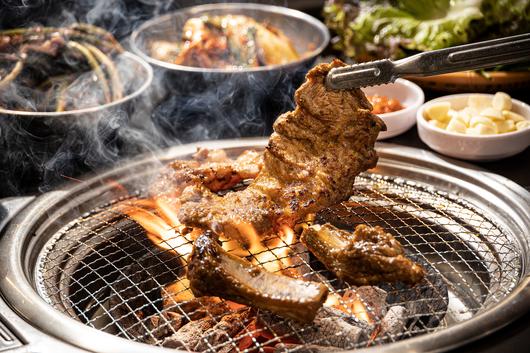Grill masters and bread lovers reflect South Korea’s new food trends
South Koreans are increasingly embracing meat as a dietary staple, moving beyond a rice-dominated cuisine. The surge in meat consumption has driven recognition of grilling as a skilled trade. In 2022, the average South Korean consumed 60.6 kilograms of meat per capita, surpassing the 56.4 kilograms of rice consumed. This marked the second consecutive year that meat outpaced rice consumption, with 2021 figures at 59.8 kilograms for meat and 56.7 kilograms for rice. Since 2000, meat consumption has nearly doubled, while rice intake has declined to about two-thirds of its earlier levels.
 |
/Chosun DB |
<이미지를 클릭하시면 크게 보실 수 있습니다> |
However, a broader perspective reveals a more nuanced shift in dietary habits. While rice consumption has decreased, the intake of noodles and bread has surged, contributing to a more diverse carbohydrate intake. According to the 2022 Korea National Health and Nutrition Examination Survey, daily energy consumption patterns have evolved significantly over the years. Among men, the share of energy derived from protein rose from 14.9% in 2013 to 16.2% in 2022, while fat increased from 21.6% to 25.7%. Carbohydrate intake, in contrast, dropped from 63.5% to 58.1%. Women displayed a similar trend, with protein rising from 14.0% to 15.7%, fat increasing from 20.8% to 26.0%, and carbohydrates declining from 65.2% to 58.3%.
These changes indicate a growing reliance on protein and a gradual shift away from carbohydrates, though the trend is less pronounced than the stark difference between meat and rice consumption suggests. This is likely due to the increasing popularity of noodles and bread.
Market research data from Euromonitor International highlights South Korea’s global dominance in noodle consumption. In 2014, South Koreans consumed 9.7 kilograms of noodles per capita, ranking first worldwide. A 2017 report from the Ministry of Agriculture, Food and Rural Affairs showed a slightly lower figure of 7.7 kilograms per capita, excluding instant noodles. South Koreans also lead in instant noodle consumption, averaging 75.6 servings per person annually, far outpacing Nepal’s 58.4 servings, according to data from Statista.
Bread, once considered a side dish, has now become a staple for many South Koreans. A 2018 study by the Korea Agro-Fisheries & Food Trade Corporation (aT) found that the average South Korean consumed 78 to 92 loaves of bread per year. The domestic market for plain bread, including sliced bread and bagels, is projected to reach 864.5 billion won next year, up 33% from 648.4 billion won ($617.45 million) in 2018, according to Euromonitor International.
[Kim Sung-yoon]
- Copyrights ⓒ 조선일보 & chosun.com, 무단 전재 및 재배포 금지 -
이 기사의 카테고리는 언론사의 분류를 따릅니다.
기사가 속한 카테고리는 언론사가 분류합니다.
언론사는 한 기사를 두 개 이상의 카테고리로 분류할 수 있습니다.
언론사는 한 기사를 두 개 이상의 카테고리로 분류할 수 있습니다.


